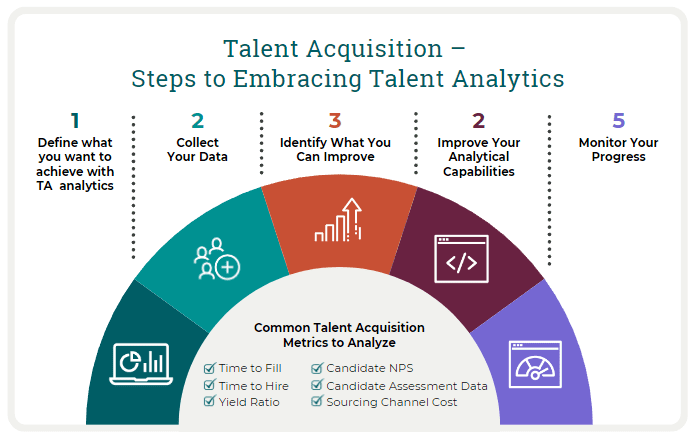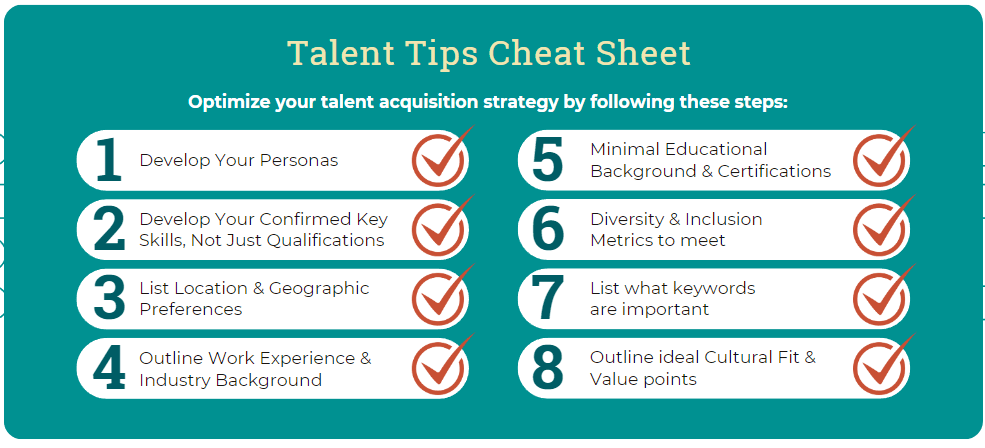In today's fast-paced business landscape, gaining a competitive edge hinges on the ability to attract and retain top talent. Companies utilizing talent analytics reported a 30% improvement in their hiring efficiency and a 25% increase in employee retention rates, highlighting the significant impact of data-driven strategies.

The talent planning and acquisition processes can be an arduous task, fraught with complications. Finding ways to make it faster, easier, and more intelligent is the focus of workforce practitioners everywhere.
The goal is to turn data into information, and information into insight.
Carly Fiorina
Politician and former CEO of HP
Horsefly Analytics delivers to this need by leveraging real-time data on talent availability, salary benchmarks, and demand trends, enabling HR leadership, talent acquisition and workforce planning teams to make informed decisions that can transform hiring and retention methodologies. True data insight ensures organizations not only attract the right potential talent but also maintain a competitive edge in a fast-paced business landscape.
Labor analytics can clarify the size, availability, distribution, and makeup of the relevant talent pool. Organizations everywhere are arming themselves with data, ensuring accuracy from the outset. Adopting this approach with more agile and established practices allows organizations to transform their speed to market and workforce management.
The New Approach
How Labor Data Can Streamline Talent Acquisition
‘Talent Cheat Sheets’ are an excellent way to set in place processes along with the correct resources for optimal paths to hyper-efficient talent methodologies. Additionally, for talent teams, navigating organizational needs in this manner allows all stakeholders to build trust and establish fluid long-term processes.
A Set process ensures all stakeholders are involved and establishes formal steps to balance internal communications and data analysis, resulting in:
-
Formalization: Roles and responsibilities are set, and all steps are predetermined.
-
Data-Driven Decisions: Moves organizations beyond guesswork and into data-based hiring outcomes.
-
Optimized Efforts: Focuses resources on the most promising talent and channels, maximizing the chances of a successful hire.
-
Proactivity: A good ‘Talent Cheat Sheet’ will identify potential issues early and allow for corrective action.

On-Demand Insights, Real-Time Impact
Securing your competitive edge
It is noteworthy that only 29% of HR professionals consider themselves proficient in making data-informed talent decisions based on their analytics. Organizations that step up to take charge of the data available to them are going to be the market leaders.
 Interestingly, these tools were forced into usage during the pandemic, spiking the use of data analytics for talent acquisition to 61%. The real-time benefits of data for the workforce were, for the first time, widely demonstrated. Not only to address unanticipated and immediate challenges like a pandemic but also for a very overdue adjustment to effective search and placement approaches.
Interestingly, these tools were forced into usage during the pandemic, spiking the use of data analytics for talent acquisition to 61%. The real-time benefits of data for the workforce were, for the first time, widely demonstrated. Not only to address unanticipated and immediate challenges like a pandemic but also for a very overdue adjustment to effective search and placement approaches.

The Challenges Talent Analytics Address
-
Identifying Talent Attributes: Use keyword searches to find skills, regional nuances, experience, and performance metrics, focusing the hiring manager's attention. Horsefly Analytics provides a top list of skills that talent pools use in their profiles and companies.
-
Compensation Levels: Ensure salaries and benefits are appropriate to attract ideal talent. Horsefly has access to both daily and annual compensation data.
-
Understanding Fit: Analyze factors like location, cultural fit, team dynamics, and alignment with organizational values. With our analytics, you can explore career tree charts which will show the paths an individual may have taken within a particular career.
-
Highlighting Skill Gaps: Understand skill gaps within the existing team or across the organization, allowing hiring managers to prioritize talent pools with the needed skills that can contribute to team success.
-
Mitigating Bias: Detect and mitigate biases in the hiring process by providing objective, data-driven insights.
Talent Tips Cheat Sheet
Developing the most efficient method to fill roles relies on internal efficiencies and effective data adoption. A well-structured 'Cheat Sheet' process, guided by data insights, can significantly enhance the hiring process. Here’s how you can optimize your talent acquisition strategy by following these steps:
-
Develop Your Personas: Start by creating detailed personas that align with the attributes required for each role. Key characteristics identified through labor data analytics include:
-
Key Skills, Not Just Qualifications: Focus on the skills necessary for the role rather than just formal qualifications. For instance, Horsefly Analytics data from 2024 reveals that 65% of high-performing software developers possess specific technical skills, such as proficiency in Python and machine learning, which are more indicative of success than a degree alone.
-
Location and Geographic Preferences: Understand where the talent is located and their willingness to relocate. But as part of your strategies keep in mind the current 20% increase in remote work preferences, highlighting the importance of offering flexibility.
-
Work Experience and Industry Background: Identify the typical work history and industry experience that correlate with success in the role. As an example, talent with a background in FinTech are 30% more likely to excel in financial analyst positions.
-
Educational Background and Certifications: Recognize the importance of specific educational backgrounds and certifications. Data again tells us that project managers with PMP certification had a 25% higher job success rate.
-
Diversity and Inclusion Metrics: Incorporate diversity and inclusion goals by understanding demographic trends and representation in your industry. Analysis from 2024 shows that diverse teams were 15% more productive and innovative.
-
Performance Metrics and Achievements: Evaluate individuals based on quantifiable performance metrics and past achievements. Data confirms that individuals with verifiable achievements in previous roles had a 40% higher retention rate.
-
Cultural Fit and Values Alignment: Ensure that inidividuals align with your organizational culture and values. Data from 2024 underscored that cultural fit was a key predictor of employee satisfaction and long-term retention.
-
Sign-off: Include in your steps time for internal agreement on all personas, skills-focused job descriptions, advertising channels, and potential talent agency involvement.

Take the First Step. It’s FREE:
The quickest path to the very best talent analytics lies in leveraging both quantitative and qualitative data. Get the insights you need from the data you already have and align with Horsefly Analytics to cut out the heavy lifting and speed up adoption.
Try out our transformative data and power up your competitive advantage. FREE no-obligation consultation and demo.
Sources: Horsefly Analytics, HR Google Talent Report 2024, McKinsey Company, HR.com. The state of HR Analytics Report, Nadeem Khan – HR Expert & Futurist & Carly Fiorina.
Ready To Take The First Step?
